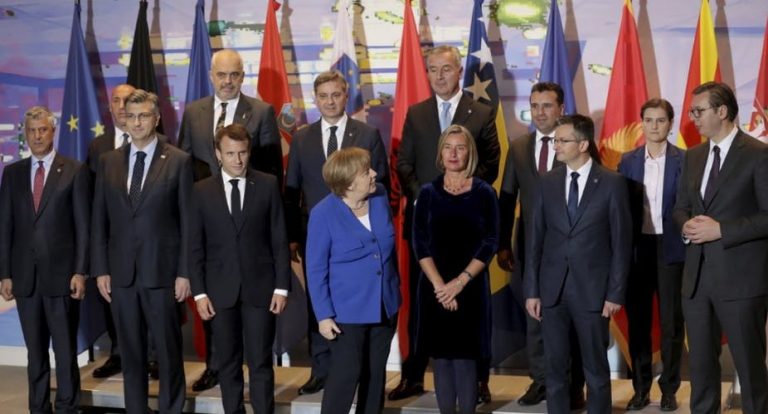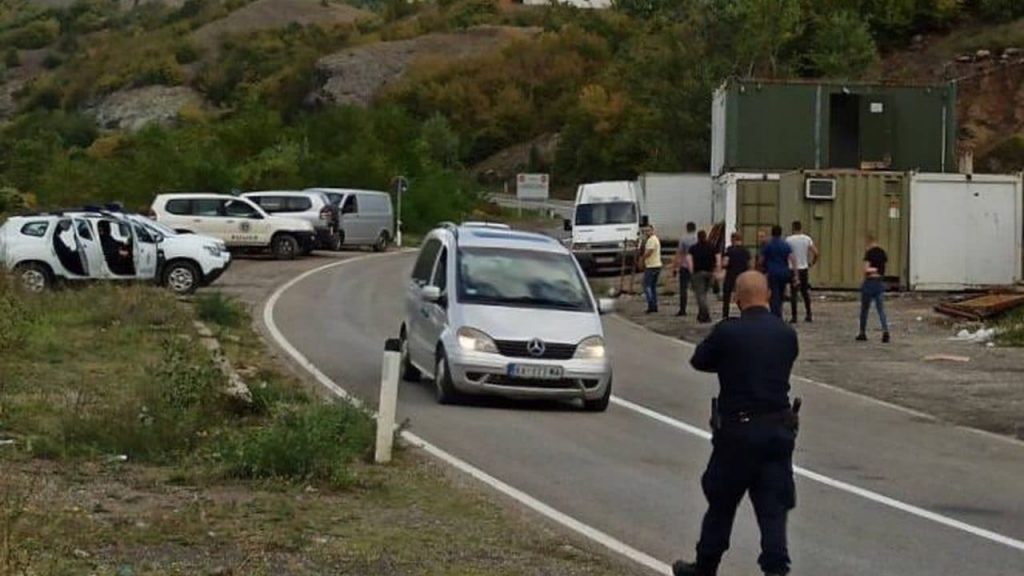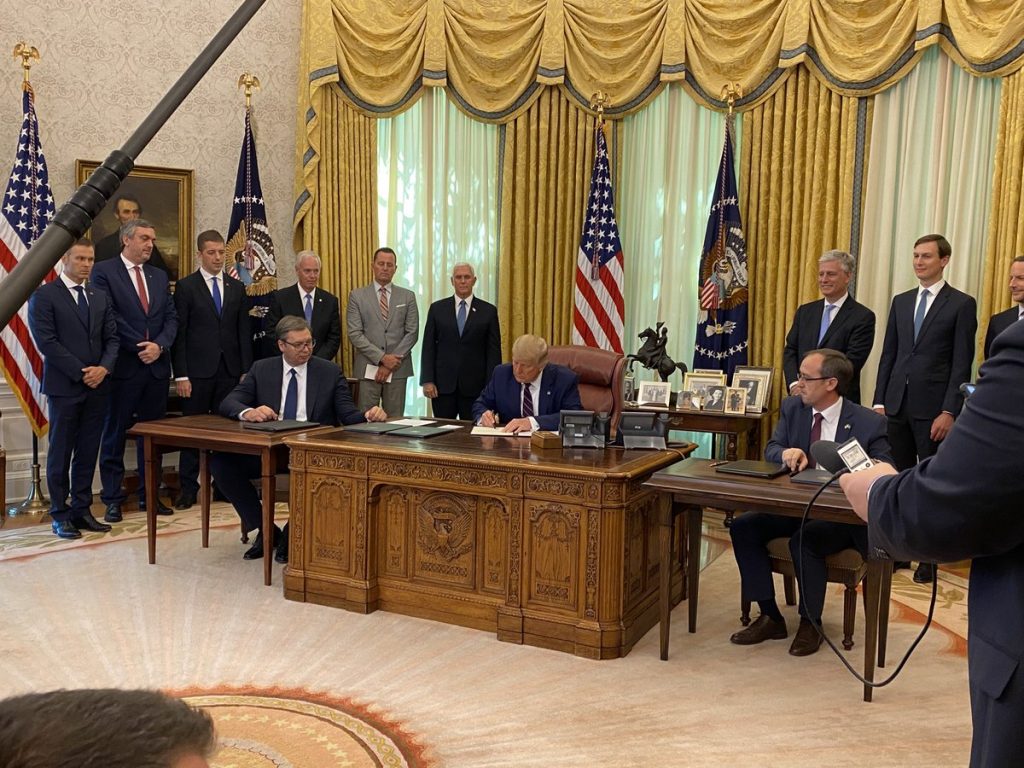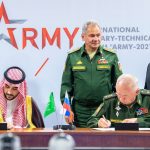For over ten days, northern Kosovo remained tense when the Kosovo Government imposed a reciprocity measure on Serbia as a result of the expiration of the agreement on free movement reached in 2016 in Brussels. Serbia has used its influence on Serbs living in this part of Kosovo to mobilize them in barricades as a rejection of the reciprocity measure. Across the border, armored vehicles, helicopters and military aircraft were deployed, on standby, and the harsh threatening language for war, of Serbian President Vucic, backed by Russia. The latter sent its ambassador, together with the Serbian Minister of Defense, to inspect the Serbian Armed Forces near Kosovo border. On the other side, the Government of Kosovo is continued to apply the measure of reciprocity with special units to prevent any serious conflict.
The situation continues to be tense despite calls for both sides to refrain. KFOR intervention was needed to guard the area so the situation would not escalate, until both sides had to sit down in negotiations in Brussels to find an emergency solution. The emergency solution facilitated by the European Union came out with an almost same result as in 2011 and 2016 which agreement has never respected by Serbia.
The agreement on freedom of movement, reached in July 2011 between the two parties, Kosovo and Serbia in Brussels, among other things states that “all car owners residing in Kosovo will use license plates RKS (Republic of Kosovo) or KS. They will be issued by the responsible authorities in Kosovo” but despite this, serb community living in the northern part of Kosovo, have continued to use license plates with the names of the cities issued by the Serbian authorities. This agreement was “finalized” once again in 2016, giving priority to another request from Serbia to extend the mandate of KS plates for another 5 years, while Kosovo citizens could not enter Serbia without expenses, they had to replace the RKS license plate with temporary ones.
The agreement between KS and Serbia facilitated by EU, had to be negotiated again after the Russian ambassador went to support US funded Serbian Army. In next agreement negotiated on September 30, for the escalation in North Mitrovica, it is foreseen that at the latest on October 2, Kosovo Police special unit will be withdrawn from the border crossings Jarinje and Brnjak, to be replaced by KFOR peacekeepers, in order to be withdrawn barricades set up by local Serbs. Temporary vehicles license plates will be replaced with stickers that will cover symbols of both countries, as a temporary solution.
While the parties are trying to adopt this agreement as a one sided victory, the agreement can not be seen as a victory of either party. Such an agreement was reached in 2011, was reactivated in 2016 and here is what happened after 5 years. Temporary solutions do not solve the problems in the Balkans. Procrastinating the dialogue process by negotiating over negotiations only deepens the problems. Tensions in the North of Kosovo should wake up the European Union, and all other international actors involved in facilitating the dialogue between Kosovo and Serbia, that this dialogue is in a deadlock.
Permanent solutions must be made between Kosovo and Serbia, non-emergency, non-six-month and non-long-term solutions. The EU is unable to have a foreign policy for this part of the Western Balkans. By finding temporary solutions is proving to be dangerous and is contributing to the new opening conflicts. The European Union must put pressure on Serbia as a provocateur of tensions and give it a clear path to the EU, to minimize Russian influence. Although a member of the PFP (Partnership for Peace) since 2006, Serbia continues to conduct joint military exercises with Russia. Recognition of Kosovo by Serbia as an independent and sovereign state, would solve the problem inherited from the 90s, this can be done only with USA and EU pressure on Serbia.








Pingback: EU: New walls between East and West - Robert Lansing Institute